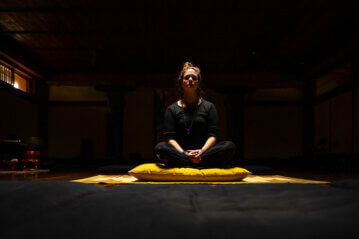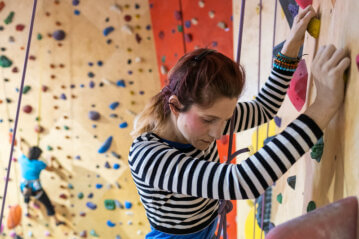Take a moment to visualize everything that makes you, you.
Your career, favorite sports team, or favorite junk food. The phone call you make to your mother every Sunday. Your go-to neighborhood coffee shop with the best Americano. The time-worn sweatpants you throw on after a hard day at work.
Consider your routine: every moment from the minute you wake up to the second you fall asleep. From the door of your home to the door of your car. Imagine those details written on a chalkboard.
Now wipe the board clean. All of it. Every word.
Imagine it is a process of 10 years before you see life come back into focus. A decade of targeted therapy, hands-on training and repeated practice before familiar words are rewritten.
You can walk again, and you’re back on the job. Perhaps you’re living on your own, happily surrounded by friends and family. Somewhere in those 10 years, every second of waking life stopped feeling like work. It stopped feeling like little victories demanded 100 percent effort and concentration. Your chalkboard is full.
Feels good, doesn’t it? Now wipe the board clean. Again.
That is Tess Sunderland’s story and triumph.
Catastrophe wasn’t new for the Sunderland’s. Just 10 years ago, a lightning bolt came out of a mostly clear sky and struck the young archaeologist while on a dig in New Mexico. The bolt nearly killed her, resulting in an anoxic and traumatic brain injury. Her injuries were so severe she required months of hospital care and more than a year of intensive rehabilitation.
Then, in early 2019, Tess was blindsided by a hemorrhagic stroke.
“A doctor told us Tess was the single unluckiest woman he’d ever heard of,” says Kate Sunderland, Tess’s mother. There was a glimpse of solace in this second crisis. The Sunderland’s had a battle plan, armed with hard-earned knowledge and experience.
“We knew how we were going to deal with this,” says Whitney Sunderland, Tess’s father and himself a decorated neuropsychologist. The family would lean on resources they sought out a decade prior: Craig Hospital in Denver, Colorado, and the Omaha-based rehabilitation center where Tess and her family had previously broken through the barriers of brain injury.
“We knew we could go anywhere. We had full confidence QLI was where she needed to be.”
The team at QLI knew months of hard work lay ahead. Before them sat a young woman who was dependent on a wheelchair for daily mobility and required support to compensate for impaired memory and organizational ability. A young woman who had already endured the grueling path to recovery and triumph and was intimidated by the prospect of making the journey a second time.
No one-size-fits-all rehabilitation model for brain injury exists. Tess wasn’t the same person who had sought out QLI 10 years earlier. Her injury, likewise, presented unique challenges and imposed new limits on her abilities. The team asked, “Who does Tess Sunderland want to be in five years?”
The answers formed a road map for Tess’s therapy, which combined advanced robotic technology and clinical expertise. Soon, her recovery, and her future, took shape.
Tess began walking with the assistance of QLI’s bionic exoskeleton. Speech therapists supercharged her implicit memory faculties with the clever use of board games. She was challenged to initiate social gatherings — taco nights for her closest QLI friends, sushi dinner dates and hair appointments. These engagements would mimic the things she valued doing most before everything had turned sideways. They also served as effective rehabilitation tools to train Tess’s sequencing, attention, ability to process information and more within a functional environment.

Through that perseverance, she created change.
“Something clicked in my attitude,” Tess says. “If I’m going to be in this situation, I’m not going to give up. I’m going to outdo myself.”
The milestones began adding up. In June, little more than a month after coming back to QLI and only four months after her stroke, she left behind the wheelchair for good. Her physical strength had improved enough to ride horseback again, to try rock climbing and bicycling and boxing — all pastimes she would embrace in full after her eventual return home.
When Tess returned home to Santa Fe in October, she did so with revitalized strength, both physical and emotional, and utter triumph. In some respects, she returned better equipped to face life’s new challenges than she had been before her stroke.

She says, “I see people look at me. I can tell they think, ‘Aw, she’s cute’ or ‘Aw, she’s hurt,’ like I can’t accomplish what I set my mind to. But I really love to prove people wrong.”
Put yourself back into Tess Sunderland’s shoes. What she has experienced is more than loss. It’s triumph twice over.
And that, above all, is Tess Sunderland’s story.
Categories: Brain Injury, Neuroplasticity, QLI Magazine, Stroke

